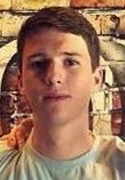Over the course of the semester, our trainees are reviewing webinars in their given fields and preparing abstracts to help colleagues outside their discipline make an informed choice about watching them. As our program bridges diverse disciplines, these abstracts are beneficial for our own group in helping one another gain key knowledge in each other’s fields. We are happy to share these here for anyone else who may find them helpful.
Understanding Human Brain Structure and Function with Cerebral Organoids
Madeline Lancaster, Program Leader, MRC Laboratory of Molecular Biology
Publishing Date not Included
HHMI Howard Hughes Medical Institute
In this webinar, Lancaster delivers a fascinating webinar detailing methods for the elucidation of relationships between brain structure and function. Specifically, Lancaster details work she and her colleagues conducted on this topic via the utilization of cerebral organoids. This webinar concentrates primarily on how brain structure and function give rise to complex cognitive functions observed in humans and other organisms, as this information can inform the design of novel treatments for debilitating, intractable neurodegenerative diseases.
Lancaster begins by highlighting the motivation for this work: namely, the high prevalence of neurodegenerative illnesses in the aging population. Importantly, it is emphasized that neuroscience drugs often perform poorly, suggesting that novel therapeutics must be designed to improve patient outcomes. In order to achieve this aim, it is necessary to obtain a thorough understanding of relationships between brain structure and function in illnesses. This can be accomplished by improving the reproducibility and physiological relevance of neurological models, and Lancaster and her colleagues approach this via the design of complex cerebral organoids.
After providing an overview of brain development, Lancaster delineates her cerebral organoid model, which functions to emulate the process of brain development. In brief, this organoid is constructed by differentiating pluripotent stem cells into embryoid bodies which give rise to a neuroectoderm, which is then placed in Matrigel and agitated to form the final brain organoid model. Intriguingly, this model manages to recapitulate the proper embryonic forebrain tissue architecture, lending credence to the physiological relevance of this model. Moreover, Lancaster discusses more recent improvements on this model, including the modification to allow the analysis of neural connectivity and cerebrospinal fluid production. Finally, she demonstrates how these organoid systems can be used to juxtapose human brain development to that of other species so as to elucidate how brain evolution ultimately gave rise to the human brain.
The importance of this seminar lies in its applications in drug development of molecules to treat neurodegenerative diseases. Specifically, the development of physiologically-relevant cerebral organoids can not only enhance our understanding of brain structure and function, but these models can also provide platforms upon which to screen numerous drug candidates for neurodegenerative diseases. The usage of organoids rather than whole organisms could provide a high-throughput approach for the development of these neurodegeneration-treating drugs.


